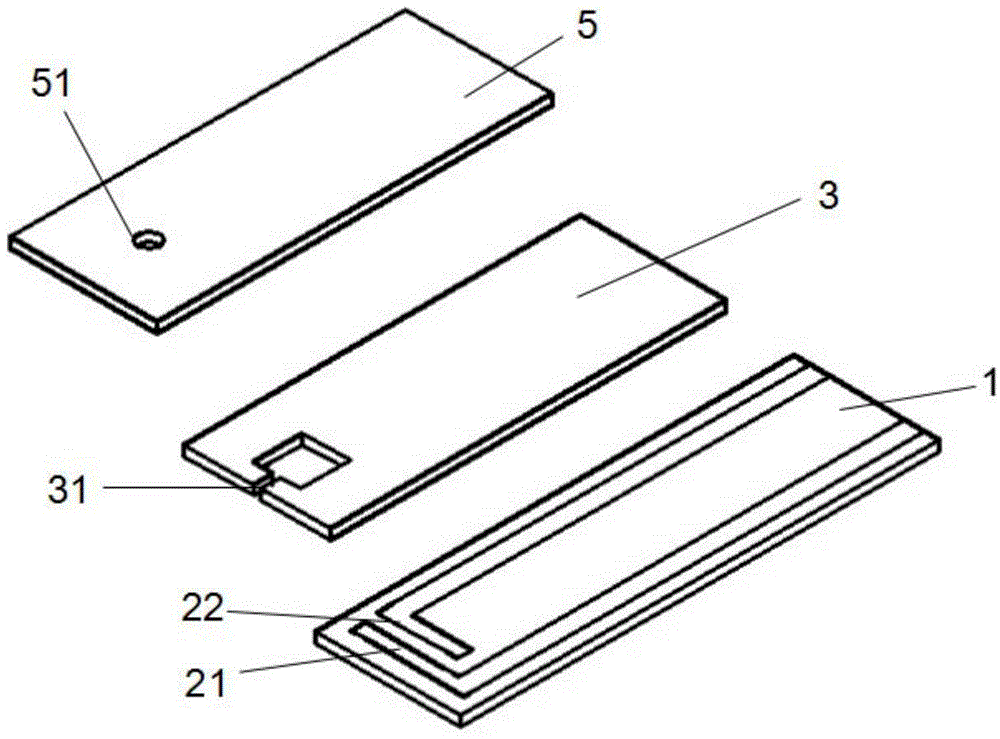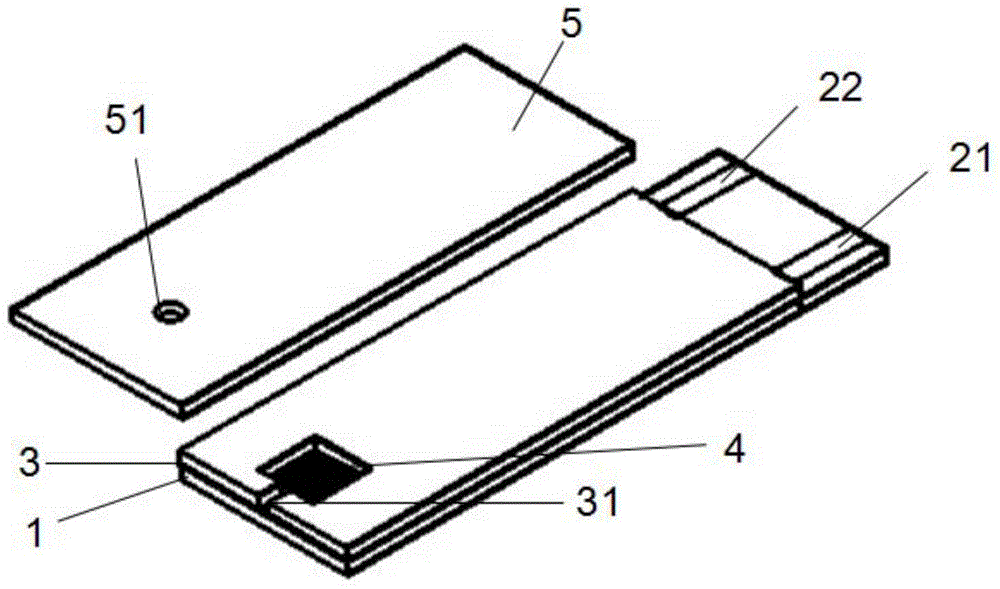Electrochemical transducer based on graphene oxide and preparation method thereof
A graphene and electrochemical technology, applied in the field of graphene oxide-based electrochemical sensors and their preparation, can solve the problems of complex preparation process, inconvenient use, etc., and achieve the effect of fast detection results
- Summary
- Abstract
- Description
- Claims
- Application Information
AI Technical Summary
Problems solved by technology
Method used
Image
Examples
Embodiment 1
[0018] Graphene oxide was prepared by the Hummers method. Add 100mL of 98% concentrated sulfuric acid to a dry beaker, cool to 0°C with a low-temperature cooling liquid circulation pump, add 4g of natural flake graphite, 2.5g of sodium nitrate and 8g of potassium permanganate during stirring, and control the reaction temperature at Below 10°C, stir for 2h. Then place the beaker in a constant temperature water bath at about 35°C, and continue stirring for 30 minutes after the temperature of the reaction solution rises to 35°C. Finally, 200 mL of deionized water was added during stirring, the reaction temperature was controlled within 100° C., and stirring was continued for 30 min. Dilute the reaction solution to 500mL with deionized water, add an appropriate amount of 5% hydrogen peroxide solution, filter while hot, and wash thoroughly with 5% hydrochloric acid and deionized water until there is no SO in the filtrate 4 2- (with BaCl 2 The filtered supernatant is detected), ...
Embodiment 2
[0023] Embodiment 2 Adopt the method in embodiment 1 to prepare the electrochemical sensor based on graphene oxide, only difference is when preparing the aqueous solution of graphene oxide and glucose-specific enzyme, the pH value of described graphene oxide aqueous solution is adjusted to 7 . The relationship between the magnitude of the current between the working electrode 21 and the reference electrode 22 with the glucose concentration is as follows: Figure 4 shown. The relationship between the current and the glucose concentration is i(μA)=0.002C(mmol / L)+0.1309.
Embodiment 3
[0025] Embodiment 3 Adopt the method in embodiment 1 to prepare the electrochemical sensor based on graphene oxide, only difference is that when preparing the aqueous solution of graphene oxide and glucose-specific enzyme, the pH value of described graphene oxide aqueous solution is adjusted to 12 . The relationship between the magnitude of the current between the working electrode 21 and the reference electrode 22 with the glucose concentration is as follows: Figure 4 shown. The relationship between the current and the glucose concentration is i(μA)=0.0027 C(mmol / L)+0.2453.
PUM
| Property | Measurement | Unit |
|---|---|---|
| mechanical strength | aaaaa | aaaaa |
| carrier mobility | aaaaa | aaaaa |
Abstract
Description
Claims
Application Information
 Login to View More
Login to View More - R&D
- Intellectual Property
- Life Sciences
- Materials
- Tech Scout
- Unparalleled Data Quality
- Higher Quality Content
- 60% Fewer Hallucinations
Browse by: Latest US Patents, China's latest patents, Technical Efficacy Thesaurus, Application Domain, Technology Topic, Popular Technical Reports.
© 2025 PatSnap. All rights reserved.Legal|Privacy policy|Modern Slavery Act Transparency Statement|Sitemap|About US| Contact US: help@patsnap.com



